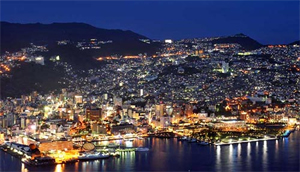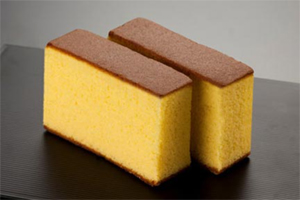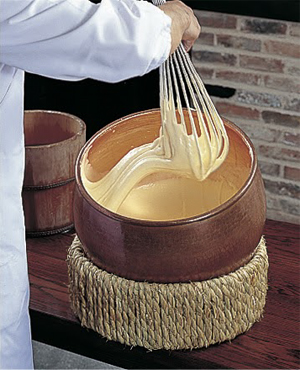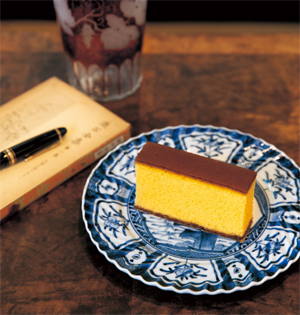

Castella: Wagashi Inspired by the West
|
Located on the northwest coast of Kyushu, Nagasaki has been a flourishing trading port with other countries since the Muromachi period, late 16th century, including the Netherlands, China and Korea. Even during the Edo period when there was a ban on diplomacy and trade with other countries, the sole exception was a special port called Dejima, which was established in Nagasaki. Being Japan’s only gateway that was open to foreign imports then, the prefecture came into contact with many then-unusual things to the Japanese, such as guns, tobacco and pumpkins. It is no wonder that we can see a mix of different cultures in Nagasaki today, be it its architecture or food. This includes castella, a sponge cake which also happens to be one of Japan’s favourite desserts today.
Among the various theories, the widely accepted one is that the recipe originated in Spain, and was introduced to the people of Nagasaki by Portuguese missionaries who had learned how to make it from the Dutch. It was introduced with the name of “Pão de Castela”, which means “bread from Castille”, with Castille being in Spain. It eventually became known as “Castela”. Though castella looks similar to a typical western pound cake, interestingly, it is classified as a wagashi in Japan. This fluffy and moist sponge cake is made with flour, eggs and sugar, and baked in a wooden mold. The wood helps in releasing heat slowly, leading to more even cooking. The signature feature of the cake is probably its golden-brown surface, whereby the top consists of caramelized glaze or honey, and the bottom has brown sugar crystals. This gives a contrast in texture, and castella is generally sweeter and moister compared to western counterparts. Butter or oil is not used traditionally. You might think that it is best to savour it fresh, but actually it is suggested to leave the cake wrapped for a few days before consumption. It is said that the cake will be more flavourful this way. Today, Nagasaki is home to over 100 castella shops. Naturally, castella has undergone many changes over the years, and in fact, today’s refined version was only developed in the late 19th century, when mizuame syrup was added. Now we can even find different flavours of castella, such as green tea, chocolate, cheese or black sugar. Castella was also introduced to Taiwan, which now has its own version. The Taiwanese version is known to be more chiffon-like. JCC held a webinar focusing on castella in August 2021, where the history, characteristics and different kinds of castella were introduced. There was even a cooking demonstration on how to make castella at home. To find out more, you can watch the archived version here: https://www.facebook.com/JCCEOJ/videos/934673834062599/ |
 © Nagasaki Prefecture Convention and Tourism Association  © Bunmeido  © Fukusaya  © Arai Akiko |
Resources
|
“Castella: A Baked Confection Born in a Port Town and Loved by a Literary Giant”. 2022. niponica. https://web-japan.org/niponica/niponica33/en/feature/feature07.html. “Nagasaki and its Castella sponge cake”. 2020. Kids Web Japan. Accessed 19 March. https://web-japan.org/kidsweb/local/castella/index.html. “Fukusaya’s Famous Castella Cake”. 2021. Japan National Tourism Organization. https://www.japan.travel/en/sg/story/fukusayas-famous-castella-cake/. |
|
Japan Creative Centre 4 Nassim Road, Singapore 258372 +65 6737 0434 / jcc@sn.mofa.go.jp https://www.sg.emb-japan.go.jp/JCC/ Nearest parking at Orchard Hotel & Delphi Orchard |
 |